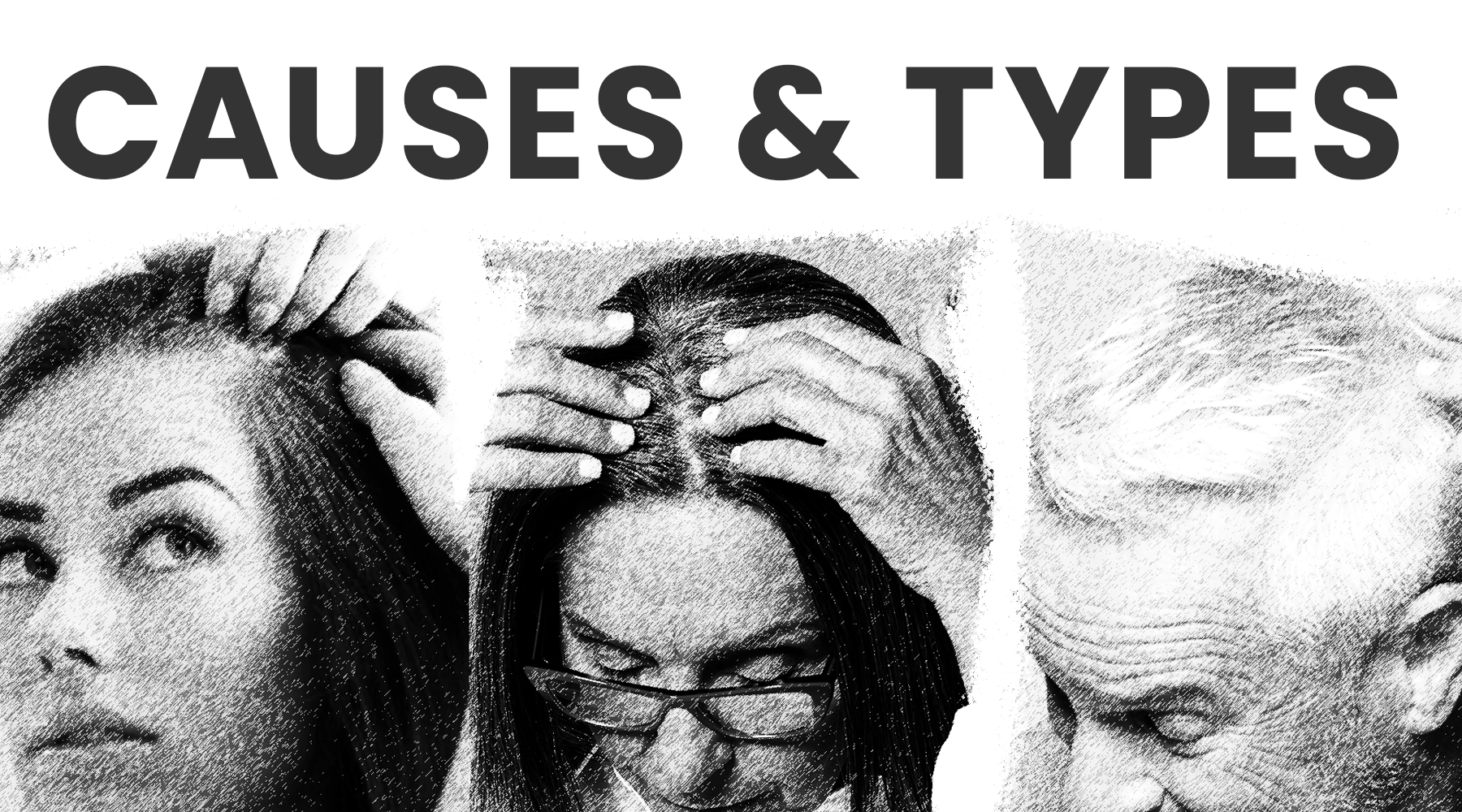
Hair loss is a common concern affecting individuals worldwide. Among the various types, androgenetic alopecia and alopecia areata are prevalent. Understanding the key differences between these conditions is crucial for accurate diagnosis and appropriate management.
Androgenetic Alopecia:
Pattern hair loss, also called androgenetic alopecia, is the most common type of hair loss in both men and women. It is characterized by a gradual thinning of hair, typically starting at the temples or crown of the head.
Pattern hair loss, known as androgenetic alopecia, is the most common type of hair loss in both men and women. It is passed down through families and hormones also play a big part. In men, it is often referred to as male-pattern baldness, while in women, it is known as female-pattern hair loss. Androgenetic alopecia progresses slowly over time, and the pattern of hair loss can vary among individuals.
Alopecia Areata:
Alopecia areata is an autoimmune condition that causes hair loss in patches. It occurs when the immune system mistakenly attacks hair follicles, leading to hair loss. Hair loss can occur rapidly and impact any part of the body with hair, such as the scalp, eyebrows, and eyelashes.
Alopecia areata can cause total hair loss on the scalp, known as alopecia totalis. It can also result in complete hair loss on the body, known as alopecia universalis. The course of alopecia areata can be unpredictable, with hair regrowth occurring spontaneously in some cases.
Key Differences:
The primary differences between androgenetic alopecia and alopecia areata lie in their causes, patterns of hair loss, and age of onset. Androgenetic alopecia is mostly due to genes and hormones, causing hair to slowly thin in a certain way. In contrast, alopecia areata is an autoimmune condition that causes sudden, patchy hair loss and can occur at any age. Understanding these differences is essential for proper diagnosis and treatment.
Treatment:
Treatment options for androgenetic alopecia include medications such as minoxidil and finasteride, hair transplant surgery, and therapies like low-level laser and red light therapy caps. For alopecia areata, treatments may include corticosteroid injections, topical immunotherapy, minoxidil.
In some cases, hair can regrow spontaneously without treatment. Consulting a dermatologist or healthcare provider is recommended for personalized treatment plans.


Shop Laser Caps Shop Supplements


















